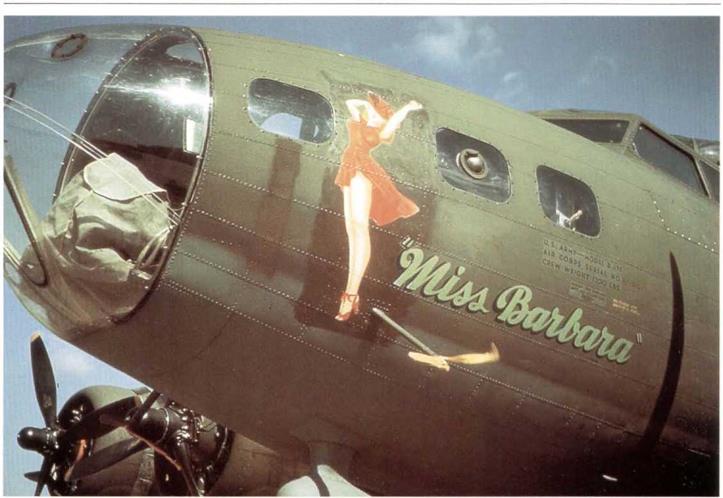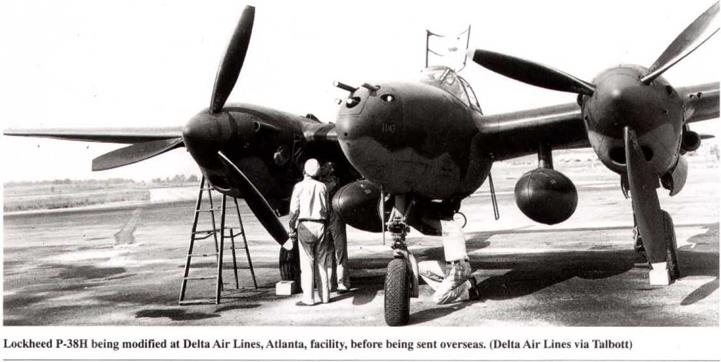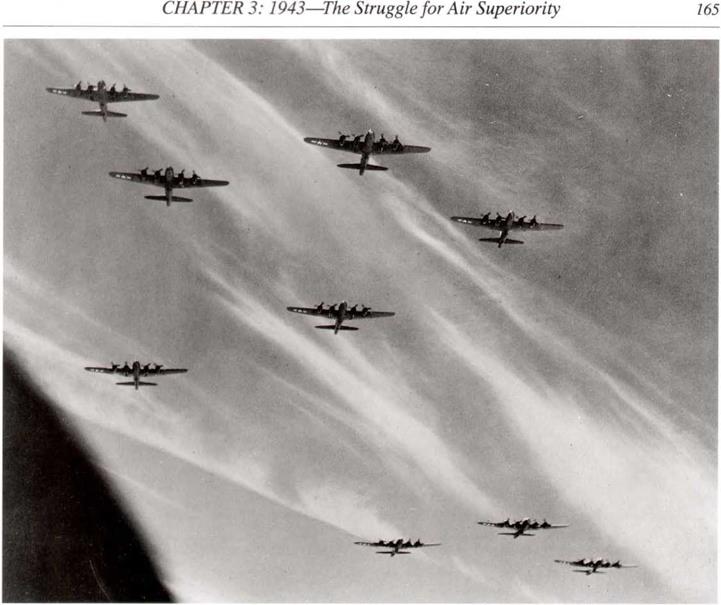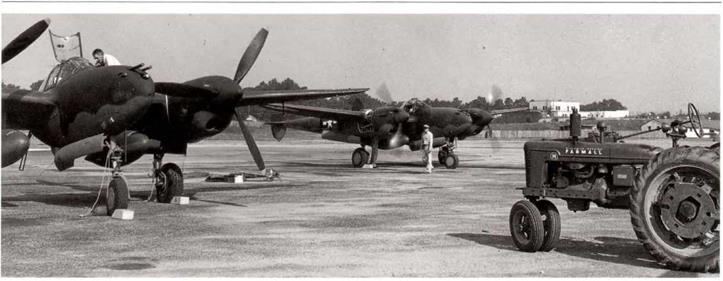High Gloss camouflage investigated for night bombers, November, 1943
At this time, the Eighth Air Force was winding down the conversion of its day bombing operations to night bombing, which had been accelerated earlier, mainly as a result of its devastating losses in attacks on Regensburg and Schweinfurt. This had started in July, 1943, with a plan to convert six B-17 groups, three from each bomb division. These were the 92nd, 94th, 96th, 305th, 306th and 385th Bomb Groups.
This was a major undertaking, as the entire AAF bomb campaign in Europe had revolved around continual day operations, this complementing the British RAF night bombing operations. The lack of suitable long-range escort fighters had forced the Eighth AF to make its longer missions deep into Germany without fighter escort, and in the summer of 1943, the resulting losses were far too high to sustain.
Gen. Eaker ordered the necessary preparations for switching to night operations; this included the changes to the B-17 to allow its use at night. These changes proved to be very extensive, numbering 100 per aircraft. Quite apart from the addition of engine exhaust flame dampers, flash eliminators for the guns, blackout and anti-searchlight curtains for various crew stations, night lights, etc., the aircraft required repainting for night flying. The following information has been extracted from a "Secret” report issued by the 422 Bomb Sq. (H), 305 Bomb Group, on night operations. This report contained details of the results of converting 13 operational B-17F’s for use in night bombing missions over Germany, The repainting was both external and internal and consisted of the following:
1. Black-out band on windows.
A 1 1/2 inch black band or stripe was painted around the edge of each window in the radio and navigation compartments to prevent leakage of light around the black-out curtains. This was necessary on all aircraft and required one man, one hour per plane.
2. Blacken bombardier compartment.
All unpainted metal in the bombardier’s compartment had to be painted black to reduce reflection and glare from searchlights. One man, one hour per plane.
3. Blacken waist and tail sections.
The entire waist and tail sections of the aircraft had to be painted black to reduce reflection and glare from searchlights. The waist windows and door windows were painted black in order that in the case of emergency the dome lights could be turned on without danger of light escaping. One man, five hours per plane,
4. Blacken underside of aircraft.
The undersides of alt aircraft were painted with black camouflage paint. This required three men, eight hours to clean and paint each aircraft.
The report’s summary stated that:
It has been definitely proved that American Aircraft can operate at night. The obstacles, though considerable, are not impossible. It is not believed possible to operate both day and night with the same aircraft without losing a great deal of efficiency for one or the other.
For dusk operations there is a considerable time after sundown, and after it is too dark to fly formation, that the western sky will remain light enough to cause a bomber above to be silhouetted, while an enemy fighter below will, in all probability, be unseen.
Eleven personnel were listed as being responsible for the experimentation, modification, and the results of the project. These included seven USAAF personnel and four RAF personnel, showing the close cooperation between the two air forces.
At that time, the RAF was using matt black finishes on the underneath and vertical surfaces of its night bombers. However, these finishes considerably increased the drag of the aircraft. Moreover, the increasing effectiveness of the Luftwaffe night fighters increased the need for improved performance.
|
A formation of nine U-17s on their way to Germany in late 1943, shows how well the new star and bar insignia can be seen underneath the aircraft. (Nick Williams) |
Thus, the RAF was investigating the use of smooth, seem-gloss and high gloss black finishes for its aircraft. Information on these finishes was passed along to VIII Bomber Command, stating that they had been able to obtain approximately a 10 mph increase in speed, together with decreased detection by searchlights. However, they were afraid that a high gloss finish would be too easily detected in moonlight, This information set off research into the possible use of high gloss for the Eighth AF night aircraft.
In the event, the night operations by the 422nd Bomb Squadron, run in September and October, 1943, suffered higher-than-expected losses and caused the tests to be terminated. A top level conference at Eighth AF HQ. in October decided that the VIII Bomber Command would be better utilized by continuing its original day bombing, especially as suitable long-range fighters were now becoming available.
However, the night operation testing resulted in two new operations which continued to the end of the war:
(1) Leaflet dropping
(2) Operation Carpetbagger – support to the resistance movement in Europe.
A third operation was the use of B-24s in support of RAF Bomber Command’s 100th Group jamming operations, but this was concluded in March, 1945.

|

|
Two Lockheed P-38Hs on the line at the Delta Air Lines modification facility at Atlanta. By this time in the war, many aircraft went directly from the manufacturers production lines to modification centers to have the latest changes incorporated. This kept the production lines moving at the very high rates needed to meet the AAF demands. (Delta Air Lines via Talbott) |












